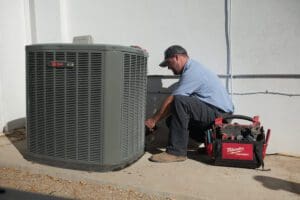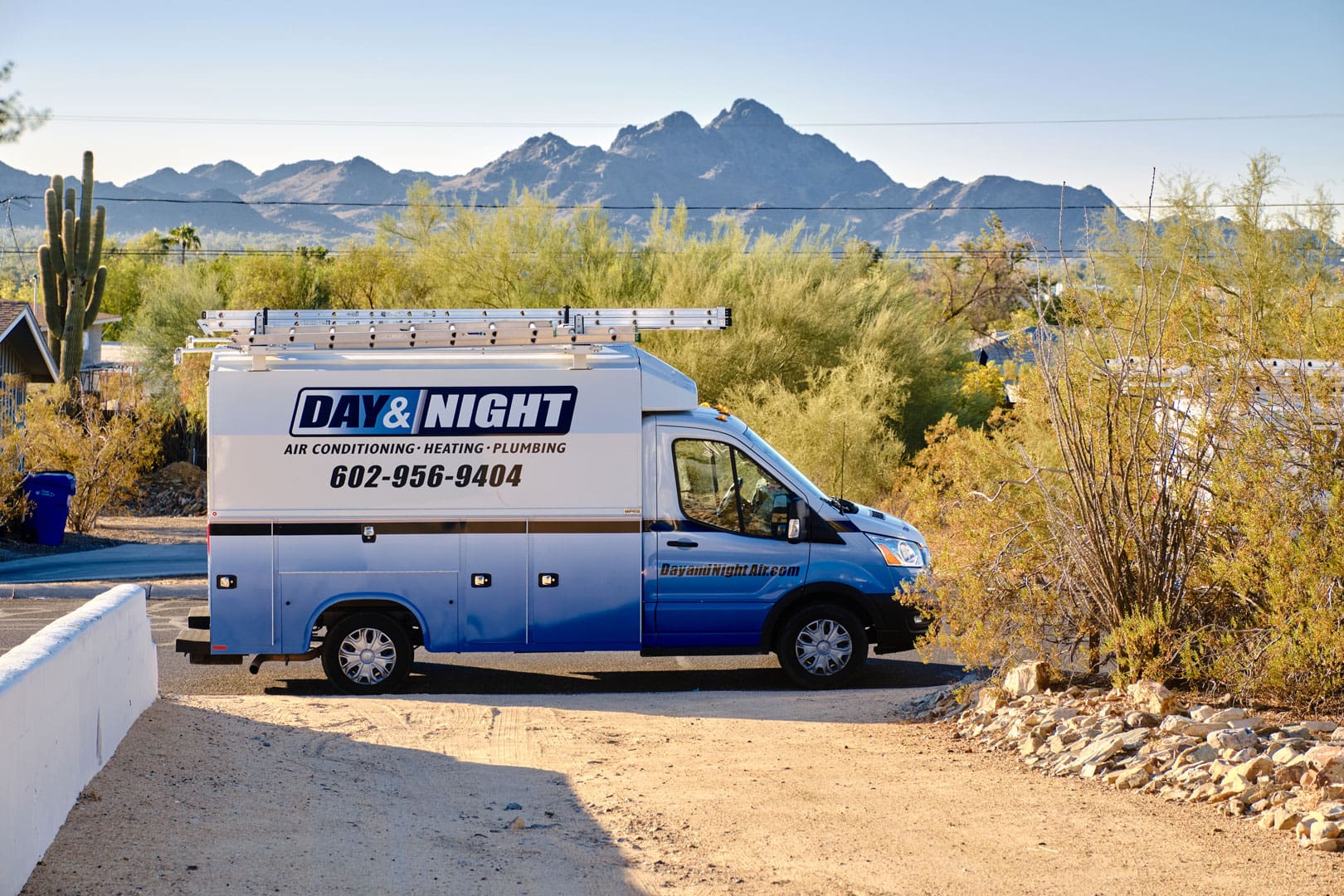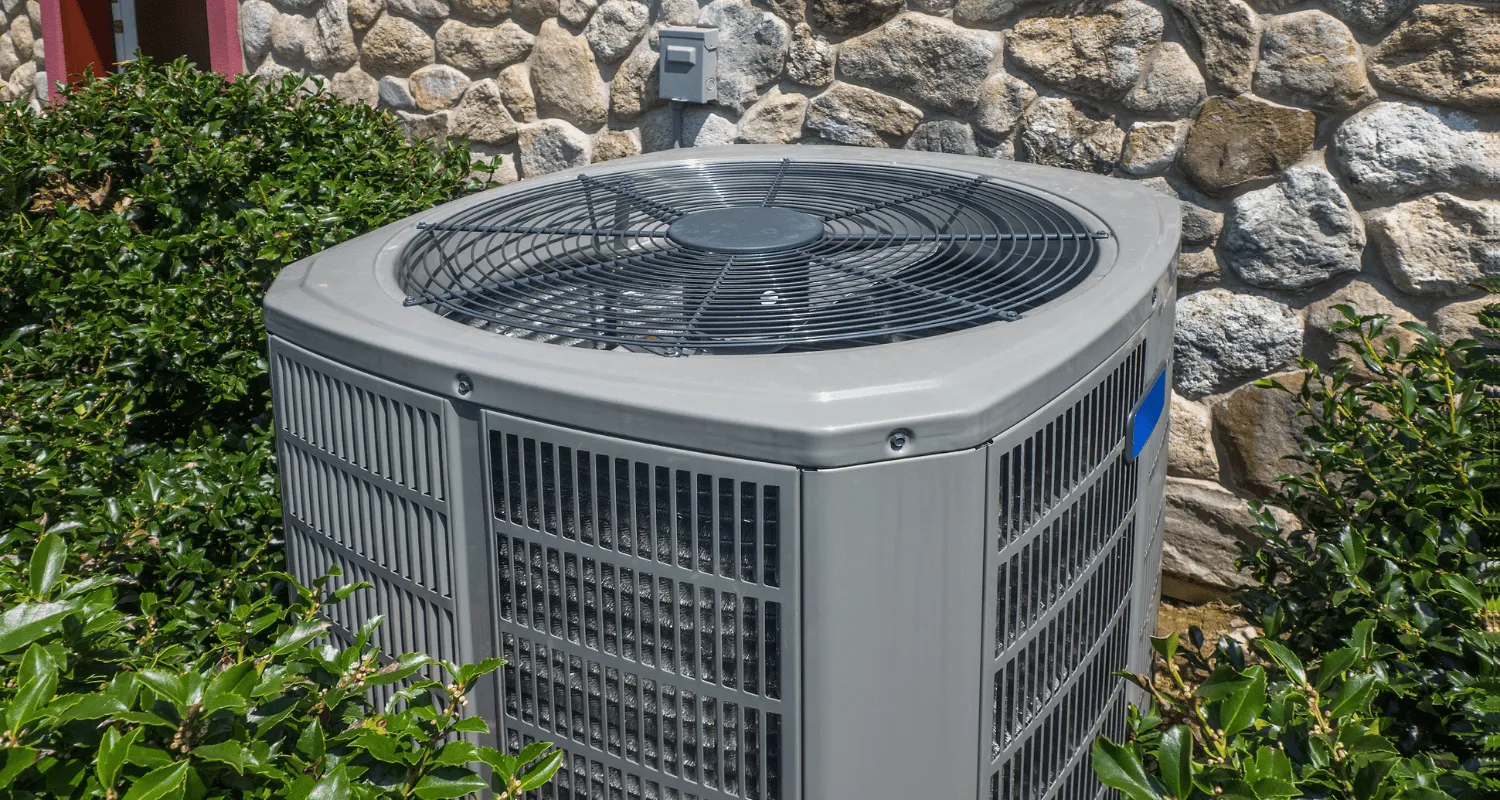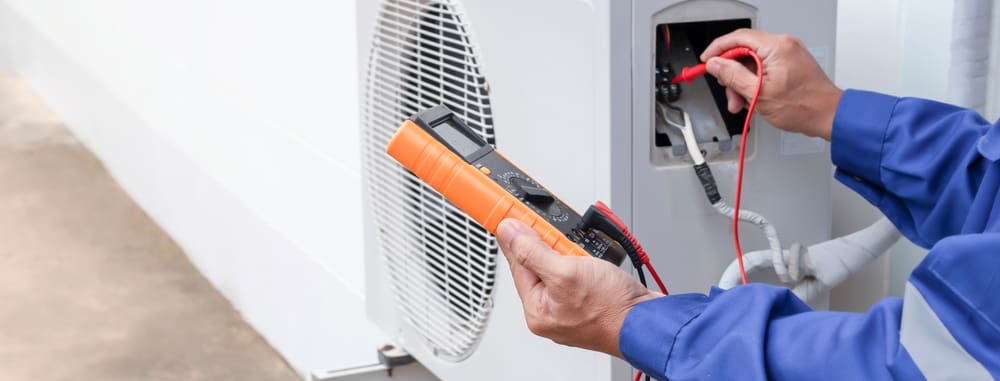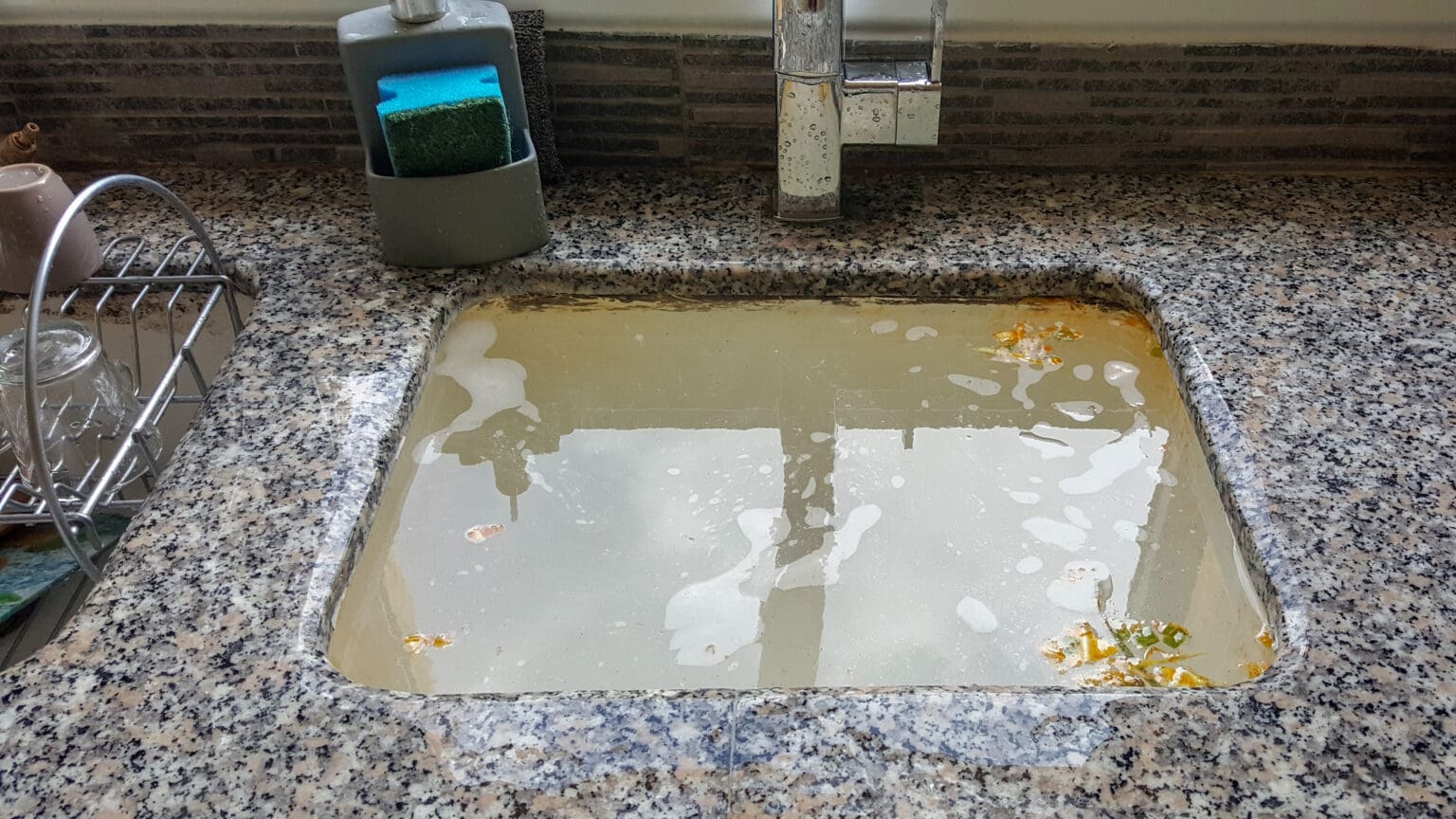Purchasing a new air conditioning system is a major investment and an incredible commitment for you and your home or business. That is why it is crucial for you to make an informed decision about what is best for your office or place of residence in Phoenix, AZ. Luckily, Day & Night Air is here to help you choose an air conditioning system that will best meet your needs. There are two main options for air conditioning, and they are packaged HVAC units and split systems. That brings up the question of which is better, a split system or a package unit system.
In the split system vs. package unit HVAC debate, neither one is right or wrong all the time. Each system provides elements and has drawbacks. The best choice for you will vary based on a number of factors. In fact, it is likely that both options would work well for your space, and your personal preferences and budget may determine your final decision.
Split System vs. Package Unit Assembly and Installation
The main difference in the packaged heat pump vs. split system is the assembly and installation process. Packaged units are assembled in factories, which means the environment for assembly is consistent and controlled. They contain all the necessary components for heating and cooling within one compact piece of machinery. This unit is always installed outside the building of choice and is generally installed on the ground or the roof of the home or business. A duct system distributes the air from the unit into the rooms of the building.
Split systems, on the other hand, are made up of multiple components that are assembled separately and installed in different areas in and outside of the residential or commercial building. Together, the components cool the home and, like package units, use a duct system to distribute air throughout the different rooms of the building. Installed on the exterior of the building, the heat pump or condenser releases excess heat outside. In the interior of the building, you will find the air handler or furnace. They are connected by a line set, which consists of wiring and refrigeration pipes.
Indoor components of split systems may seem like a bothersome and unwelcome addition to the inside of your home or office, but they are more convenient than they sound. Different kinds of indoor components are assembled in different ways, like only-horizontally attached pieces or only-vertically attached pieces, so you can choose whatever works best for you and your space. Indoor components can be installed in a number of areas, including closets, attics, and basements, so they will be out of sight and out of mind.
Regardless of whether you are having an air conditioning unit installed in your place of residence or a commercial building, it is critical that the standards and processes of the Air Conditioning Contractors of America, or ACCA are used. ACCA provides a technical manual that lays out the specific installation practices that should be used with each system.
Split System vs. Heat Pump
There is no one universal cost for air conditioning units, just like there is a range of prices for any other product or service. Prices vary based on brand, how recent the technology is, the SEER rating, and other factors. The equipment costs between high-end split system units and state of the art package units should not vary drastically.
However, because split system units contain more components, the installation takes more time and is more complicated than that of a package unit. It also may take a little bit more time to determine exactly what unit size and brand you would like to use because you will have to choose based on the available space inside your home rather than simply adding on a package unit outside your home.
Because of differences in the amount of labor that is required for installation, split system units do often have a higher initial cost. Because of the multiple components, they are also sometimes more difficult to service, so it is possible that maintenance on a split system unit would be more costly.
There is also usually an additional charge to cover the line set that connects the inside and outside components. In some cases, a flat rate for the maximum length of line set is charged, but sometimes the additional fee fluctuates based on required materials. However, because of the higher SEER rating and efficiency, many split system units cost less month to month in the form of lower energy bills.
If the initial difference in cost seems like an unnecessary burden, it is possible that the investment will pay off in the long run. With the help of a Day & Night technician, you can find out an estimate of the cost differences over time, which may change the way you perceive the value of the initial investment of a split system unit.
Split System vs. Package Unit Efficiency
When choosing a new cooling and heating system, many people are concerned with the energy efficiency of their options. While it is no secret that more energy efficiency is generally ideal, it does not necessarily mean it should be the first and foremost factor in your decision-making process. With that being said, split systems reach higher efficiency levels than packaged units usually do and may reduce your monthly energy bill. However, if your current cooling and heating system is a decade old or more, it is highly likely that any new unit will increase your energy efficiency by up to 40%.
You can get an idea of how efficient a unit can be with the seasonal energy efficiency ratio rating or SEER. If you have reached the end of a reasonable lifespan for your current air conditioning and heating unit, it will likely have a relatively low rating, because it is probably quite old. Some of the oldest working units have ratings near 6. Today, you can easily purchase a package unit with a 15 SEER rating. The SEER ratings on many units vary, but there are split system units that can reach up to 25 SEER.
While split system units often promise more energy efficiency and lower energy bills, it is possible for the unit not to offer its full potential in terms of efficiency. Part of the benefit of packaged units being assembled in controlled environments is that it can almost be guaranteed that the unit will operate at its highest level of efficiency. With split system units, efficiency depends as much on the installation as the assembly of the unit itself. Therefore, it is critical that installation is performed by an experienced and licensed technician.
When You Should Replace Your HVAC Unit
Perhaps you are not sure if you need a new air conditioning unit, but you want to be prepared just in case. How do you know when a new system has become a necessity? In Phoenix, going even a day without air conditioning can be a miserable experience, so there are some signs you can look for so you can know when to replace your unit before it completely goes kaput.
HVAC Low SEER rating
At Day & Night Air, we are committed to giving you high-efficiency heating and cooling. We only install units that have a SEER rating of 14 or above. If your unit has a rating below that, it may benefit you to replace your system and increase the efficiency of your home or office.
If Your AC in More Than 10 Years Old
Standard HVAC units are only designed to function well for about a decade. If your unit has been in your residential or commercial building for over 10 years, you have gotten the best out of it. Waiting to replace it would simply be waiting for it to fail you and cost more money in repairs than it is worth.
If repairs are frequent or one is expensive
If you have called a technician to solve multiple problems with your air unit in the recent past, it would be a wise decision to replace the unit completely. While repairs seem like a smaller financial commitment, the price of fixing the unit over and over again quickly adds up. This is also true if one large repair is necessary. Oftentimes, it is a better solution to replace a unit than pay a hefty fee with no guarantee that the problem will remain fixed.
As someone who spends a lot of time, or perhaps the most time, in rooms serviced by your HVAC unit, you will be the first to notice when the performance of your unit begins to decline. Using these markers and taking note of your comfort levels and spending on repairs will usually lead you to the right decision.
HVAC Contractors
If you still need help deciding whether or not you should move forward with a new air conditioning unit, the technicians at Day & Night Air can help. We will tell you how to know your unit’s SEER rating, inspect it to see how well it is functioning, and give you an honest and fair quote on all necessary repairs.
When a replacement is deemed necessary, we will give you a recommendation on a package unit or split system unit that will best serve the space that requires the new unit. Do not worry if some of the differences between the units do not make sense. We will walk you through the details of each option so you can make an informed decision.
HVAC contractors at Day & Night Air are trustworthy and deliver excellent service with every visit. We will ensure that you get the best possible unit with maximum efficiency and that it is installed correctly. Whether you are ready to purchase a new unit or still have questions, contact us today for the best HVAC service in Phoenix.

